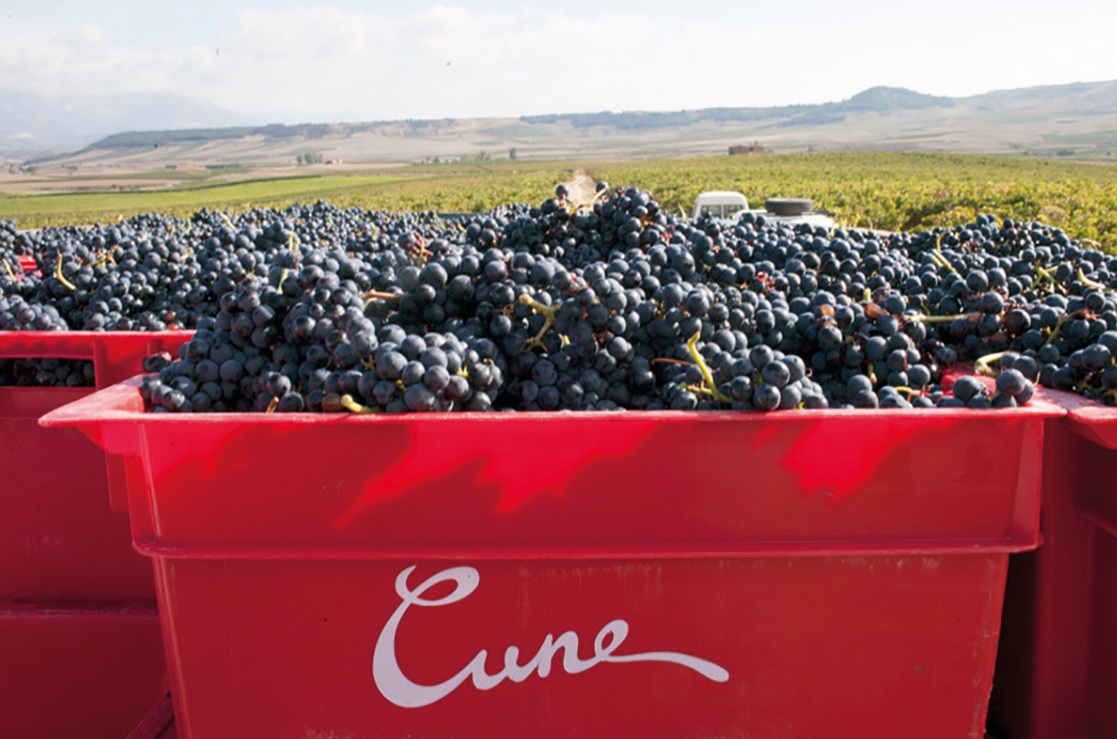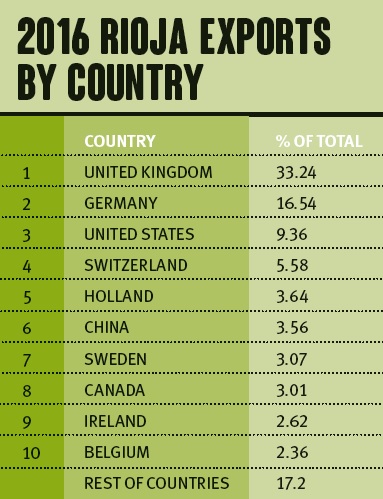
Singular quality
Speaking specifically about the UK, he says: “This year we are entering into new and exciting territory by taking our Rioja bar to music festivals where we get to engage with a new crowd. This summer we will be at the Wilderness Festival in Oxfordshire and Citadel Festival in East London. These festivals give us an opportunity to engage with tens of thousands of consumers between the ages of 25 and 45, making Rioja relevant and accessible.”
James Wainscott, communications manager at Wine Intelligence, tells DI: “Rioja has carved out a good standing in the global wine market – it is a well-known region, with awareness levels among UK regular wine drinkers hitting around 67%.
“For comparison’s sake, we could say that Rioja is the Bordeaux of Spain. Both regions boast big production, a long list of well-known brands, wines at every price point – and quality level, and good consumer awareness,” says Wainscott
CVNE export area manager Carlos Delage says: “Demand for Rioja wines is increasing around the world, we’ve got markets such as the US, Switzerland or China growing at a very good pace with excellent average price, and these markets demand aged wine. That’s the future of Rioja. Customers are finding out that Rioja can also produce outstanding rosés and whites.”
Wainscott says: “The quality of Rioja’s white wines has improved immensely in recent years and they are beginning to garner more attention at home and abroad. While I cannot divulge our findings, I can say that several export markets are getting good traction. The Wines of Rioja report shows that 2016 exports of white Rioja are up 4.72%, and domestic an impressive 13.37%.
QUALITY WHITES
In a recent Decanter report on Rioja, Spanish wine specialist Sarah Jane Evans MW says: “Change is in the air in Rioja and not just among those who are questioning the regulatory body’s rules. You will meet an encouraging new generation of Rioja producers starting their own bodegas. In making my choices, I was asked to focus on Crianza Gran Reserva and non-Tempranillo red wines, but it is worth pointing out that Rioja also has some exceptional whites. Hopefully some of these star white wines will make their presence felt at the 2016.”
Tim Atkin MW in the same report says: “In Rioja, all but a handful of the DOCa’s finest wines are comparatively inexpensive. There are oceans of cheap supermarket Rioja – I saw Reservas on sale for £5.49 over Christmas – which suppresses the price of the good stuff, at least for now. You don’t need to spend much more to trade up from something that’s simple, fruity and oaky to something that is complex, balanced and age worthy.
“How much longer will this continue? Changes are afoot. Rioja is seriously debating allowing producers to use the names of individual villages and vineyards on their labels – ludicrously, such a thing is forbidden at the moment. If that happens, I think the best terroir-focused Riojas will start to attract the attention of wine collectors and investors. And we all know what happens then,” says Atkin.
SUMMARY
WI’s Wainscott says: “We think we’ll see the emergence of sub-regions within Rioja and an increasing number of quality-minded producers stepping away from the DOCa. While 95% of producers will benefit from being a part of the DOCa, a small percentage are being driven away by political reasons (such as the Basque pushing for their own region).
“Styles of Rioja vary massively and growers are embracing modern technology, planting a greater variety of grapes – even Verdejo is permitted now, rather controversially – using different types of wood, toast, and ageing processes. You’ll see more gravity-fed systems and concrete eggs. We also anticipate a big push for wine tourism.”
The consejo’s Lapuente says: “Ensuring balance is key to optimising our potential and Rioja looks to European guidelines to maintain this balance between supply and demand. In terms of wine styles, we are focusing on our blended wines, as well as terroir-driven wines and new whites. In the slightly longer term we will also have high quality sparkling wines available.
“We try to meet the demands of all type of consumers and generate new consumption habits, and also incorporating gastronomy into our strategy.
“In the UK, we expect the category to remain strong, as it has to date despite declining sales in the overall Spanish wine category. For us, premium Rioja is a big focus, but we see great potential for Rioja Rosado and Rioja Blanco as consumers explore the diversity in the region,” he concludes.
Delage says: “I believe the future is within the Reserva and Gran Reserva categories – our wines are made to be aged in barrels and in bottle.
“The great challenge is for all of us to work together and look in the same direction, focusing in quality, not quantity. Rioja is an added-value product and we all need to position it in the top wines in the world. “We all need to believe in it and position our wines in the place they deserve,” says Delage.
